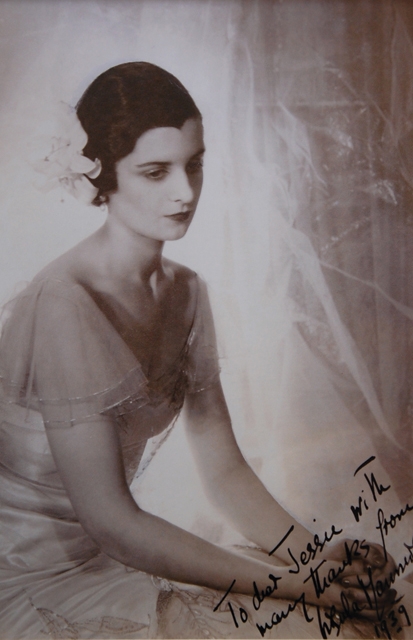This is the Real Thing, an evocative account of English upper-class life throughout the 20th century. It begins amidst the Edwardian feudal splendours of Belvoir Castle, where Ursula d’Abo spent much of her childhood with her beloved grandfather ‘Appi’. At the coronation of George VI she was a maid of honour to the Queen. During the second world war she worked with 2,000 women making bullets. Postwar life was hardly less varied and amazing, with an other-worldly stay in princely India, and meetings with Nehru. Married life at West Wratting Park and Kensington Square, two beautiful Georgian houses she restored, was followed in her widowhood by five years with Paul Getty at Sutton Place.
The most moving part, however, is her childhood and closeness to her father John, 9th Duke of Rutland. The inquisitive child’s-eye view is perfect. Not questioning but taking in everything with equanimity, from orchids and gold plate in the dining room to helping the whiskery pig-man feed swill to his squealing piglets.
She was an eldest child and her father’s favourite. She helped him with the painstaking restoration of the Rutlands’ other house, romantic Haddon Hall in Derbyshire. This was a schoolboy dream come true: he had spent his pocket money at Eton rescuing discarded oak furniture from farms and cottages in Derbyshire. Ursula shared her father’s love of beautiful old things. They melted down the ancient lead and used a baizeless billiard table to form new sheets. Together they picked flaking whitewash off the medieval murals in the chapel, she, a fearless child, perched on the highest scaffolding.
The outbreak of war smashed the idyll. Ursula describes the dramatic moment in the Great Hall at Haddon in August 1939 when her father said: ‘We shall never lunch round this table again; war has broken out.’ He himself died a year later. Ursula was firstly a nurse in London, and narrowly escaped death when her lodging was bombed. She returned home to Belvoir and commuted in a ‘gig drawn by a chestnut filly’ along moonlit roads to the ammunition factory at Grantham. In 1943 she married Anthony Marroco, a lawyer who was to act as junior counsel at Nuremberg, but then a dashing ‘air ace’. It didn’t last: ‘Many short, intense romances blossomed which didn’t withstand the drab realities of peace.’
Feeling depressed, she renewed her acquaintance with the dazzling Maharajah of Jaipur, who said: ‘You must come to Jaipur to have some good food and sunshine.’ So she did, flying in an old RAF plane via Dubai over shark-infested seas. She loved Rajasthan, with its medieval forts, elephant guards, sacred peacocks and the pale pink buildings of Jaipur, where she witnessed the three-day Festival of Colours in all its 18th-century glory. More prosaically, Nehru gave her the collected writings and speeches of Gandhi.
Back in England, a terrible car smash in Erland d’Abo’s Bentley led to her marriage to him, and treatment by Rainsford Mowlem, the celebrated plastic surgeon, at the London Clinic. It took three operations to remove the dent from her face. At West Wratting she brought up her family: ‘I was happily married with three wonderful children and the house was so beautiful.’ In 1970 Erland died of a heart attack. She became close to Getty: ‘I felt so lost and lonely, I fell for this dear old man’s kindness and charm.’ They eloped to Italy. There is a good vignette of the creepy court at Sutton Place.
The book ends with the grandchildren, and Ursula moving from Kensington Square to a flat in Notting Hill. On her 90th birthday, a surprise party was organised at the Ritz with 100 people and her favourite pudding — individual vanilla soufflés in raspberry sauce. She danced until midnight.
Now 98, she still goes to Belvoir and West Wratting, but Haddon is too difficult, as the ‘floors are so undulating and the steps too steep’. She tends to ‘fall like a ninepin all the time. Fortunately I haven’t broken a leg’, but is mentally agile. Surrounded by family and friends, she is ‘ready to face a new adventure every day’.
This very English story, told with brio and charm, is enhanced by amazing illustrations: photographs by Cecil Beaton and sketches by Rex Whistler. The book, written for Ursula’s grandchildren, will find many other readers. It is in the tradition of Trumpets from the Steep, by her aunt Diana Cooper — whose son, John Julius Norwich, contributes a foreword.






Comments